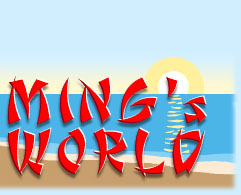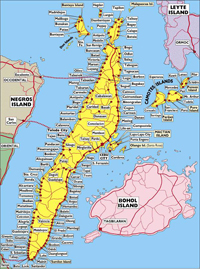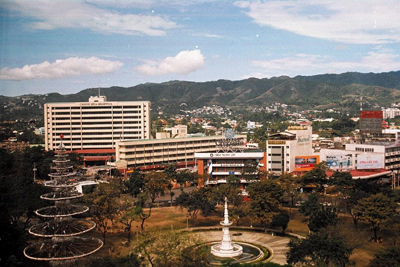
Updated:
May 26, 2011 Template design by
|
C E B UCebu is one of the most favored provinces of the Philippines. This elongated island, roughly 250 kilometers long and 45 kilometers at its most expansive point, is endowed with abundance of natural beauty. Various colorful festivals in the province of Cebu also attract curious tourists Cebu is located strategically amidst a group of islands that frame the Visayas, center of the three principal Philippine island groups, the others being Northern Luzon and southernmost Mindanao. Geographically located between 9°25'N and 11°15'N latitude and between 123°13'E and 124°5'E longitude in the center of the archipelago, Cebu has an admirably warm climate and among the lowest rainfalls in the country. Summer months from March-May are usually dry. Cebu is surrounded by 167 neighboring smaller islands that include Mactan Island, Bantayan, Malapascua, Olango and the Camotes Islands. Its boundaries are Visayan Sea in the north and Camotes Sea in the Northwest, Tañon Strait in the west, Mindanao Sea in the south and Bohol Strait in the southeast. Hilly and mountainous, this tropical destination’s ideal position assembles an idyllic beauty and tranquility, making every transition truly accessible for both foreign and domestic travelers. Cebu province is accessible by land, sea and air travel. Once in Cebu, however, different kinds of transportation take one around the various tourist and commercial attractions. The Mactan International Airport in Mactan Island facilitates a comfortable and easy access for both foreign and domestic travels. Named as the 8th best Asian-Pacific island destination in 2005 by the UK-based Condenast Travelers Magazine, Cebu is considered as one of the most developed provinces. It is also the main center of commerce, trade, education and industry in the central and southern parts of the archipelago that consists of more than 7,100 islands. Its capital Cebu City, the oldest city in the country, is widely known as the Queen City of the South. More than three million people occupy the island’s area of 5,000 square kilometers. In Cebu province, Spanish and Chinese communities claim a significant economic and political role. Foreign ethnic groups likewise take center stage. Currently, Koreans are estimated to be the biggest group, followed by the Americans. Other foreign ethnic groups include Japanese, British, Germans, Australians, and other smaller groups of Asians and Western Europeans. Cebu, which was then known as Zubu or Sugbo, was “discovered” by Portuguese Explorer Ferdinand Magellan on April 7, 1521. Prior to the arrival of the Spaniards, Cebu was already a flourishing trading post, with trade routes to China, Siam, Arabia as well as the nearby Malay islands. Cebu has a vibrant and dynamic media community. It has five local television channels including ABS-CBN Channel 3, GMA Channel 7. Cebu Television Channel 28, Real Cebu Television Channel 36, and Cebu Catholic Television Network Channel 47. However, Channels 28 and 36 are only seen on cable television. Cebu has three local newspapers in English: The Freeman, SunStar Cebu and Cebu Daily News. There are also newspapers in Cebuano-Visayan: SunStar SuperBalita that is owned by SunStar and The Freeman’s Banat News. National newspapers also enjoy its presence in the province. The native people in Cebu are called Cebuanos. Most tourists love to come in Cebu not only because of the province’s immaculate beaches, esoteric islands, colorful festivals, beautiful landmarks, etc, but also because of the people who are widely known for their convivial smile. The exotic Cebuano-Visayan language is the mother tongue though English is often used in business transactions and education. Peso is the Philippine currency. Foreign currencies can easily be changed at banks, hotels and authorized dealers though it is not readily taken by the establishments in Cebu. Major foreign credit cards may only be accepted at major hotels, resorts, shops and restaurants. Visitors are highly encouraged to bring sufficient amount of change in small bills and coins. Considered as the economic hub of the Central and Southern Philippines, Cebu is currently fast becoming the I.T. and call center capital of the country. Modern communication facilities are available in the province. It has a fair density of computer installations, and full access to the Internet. Cities in Cebu
Proceeds
of this websites supports BUGSAY. |
|||||||||||||||||||||||||||||||||||||||||||||||||||||||||





